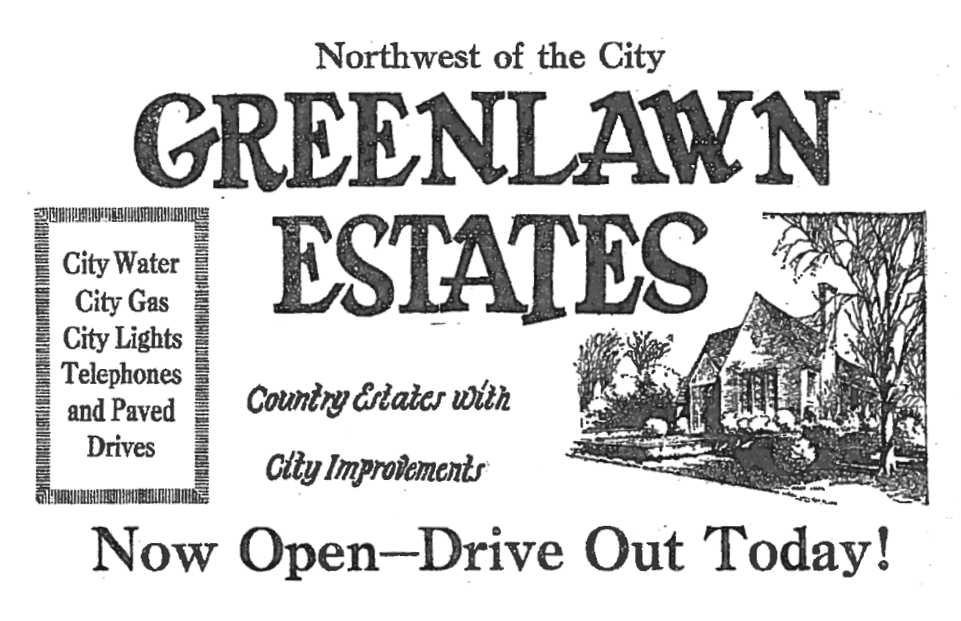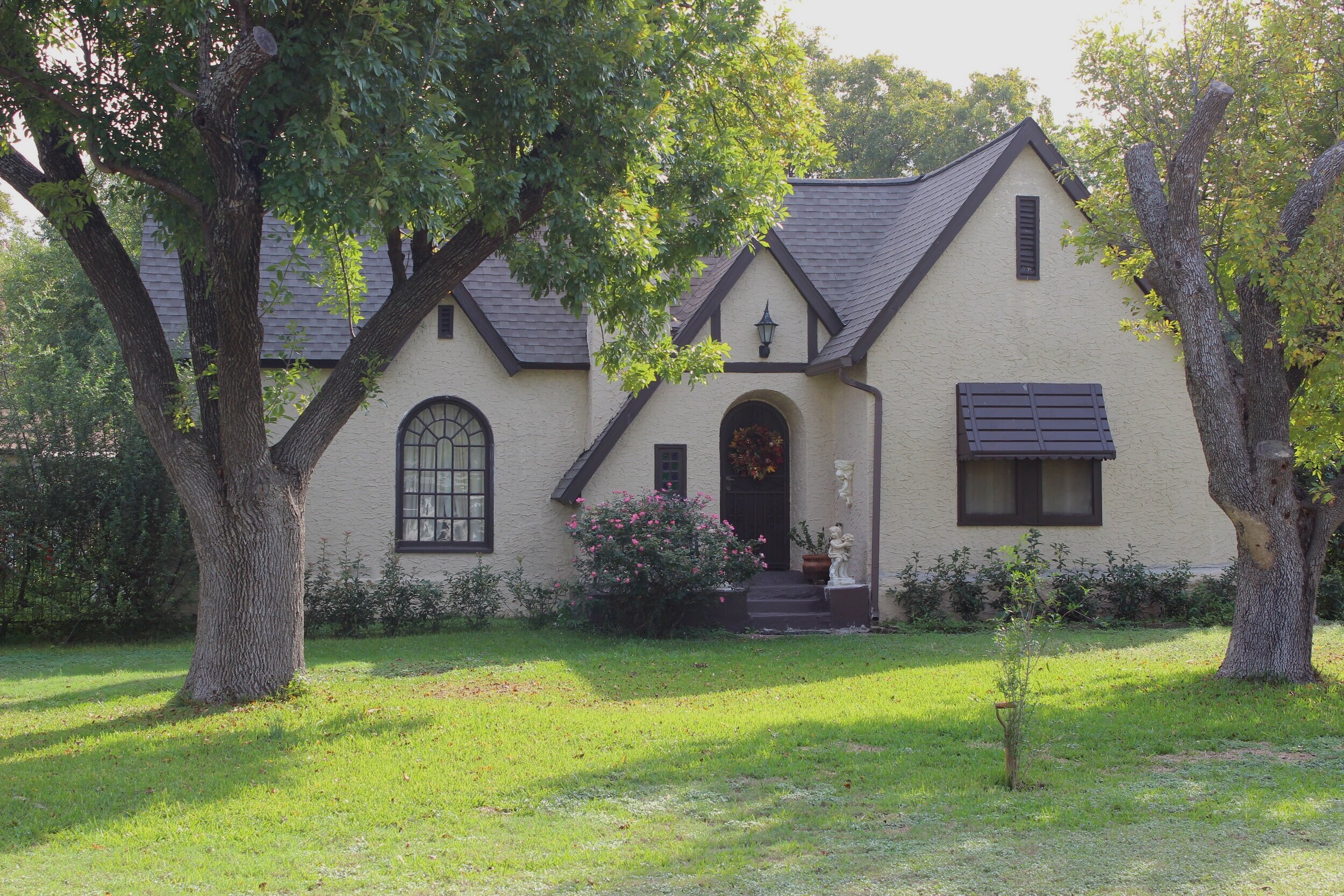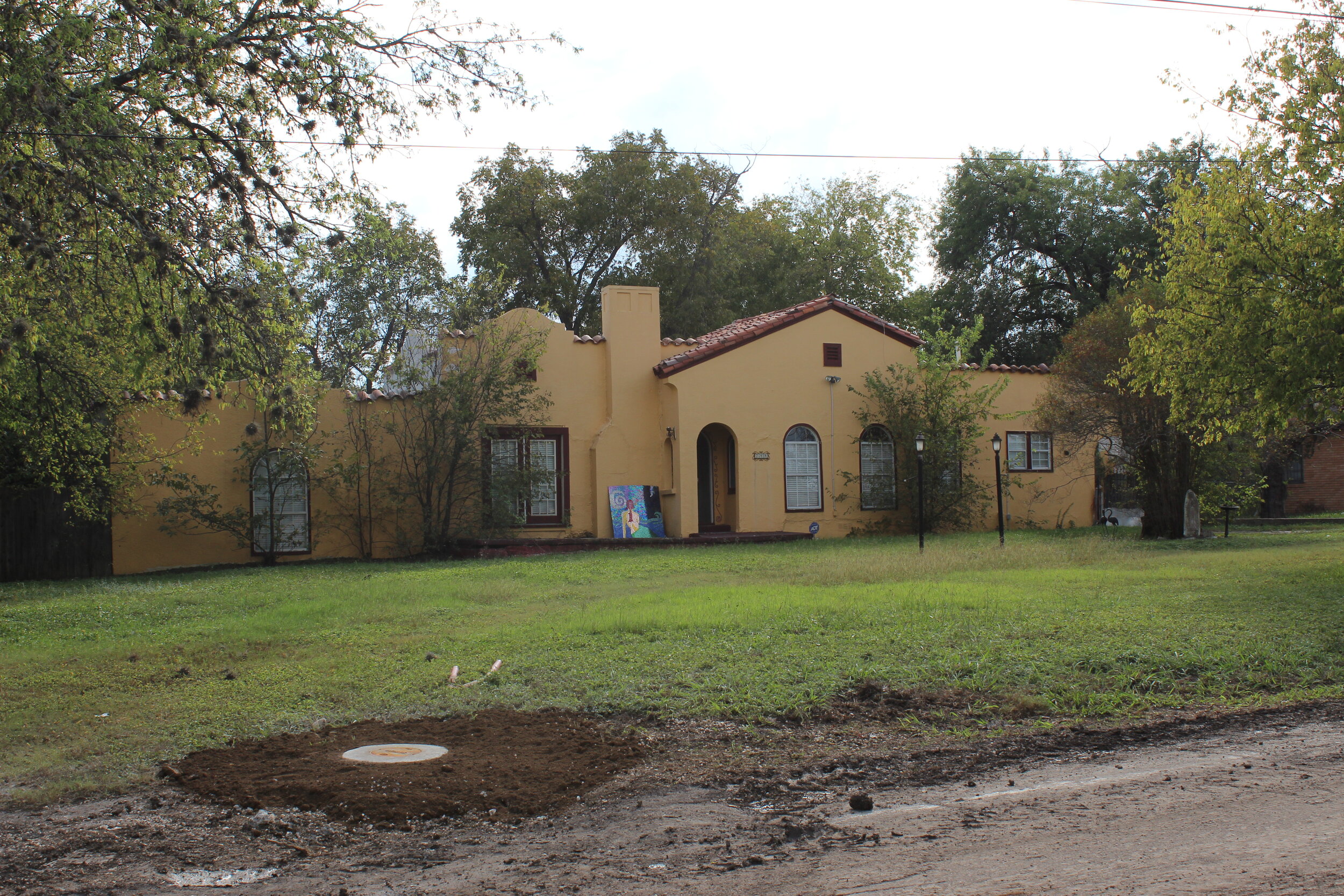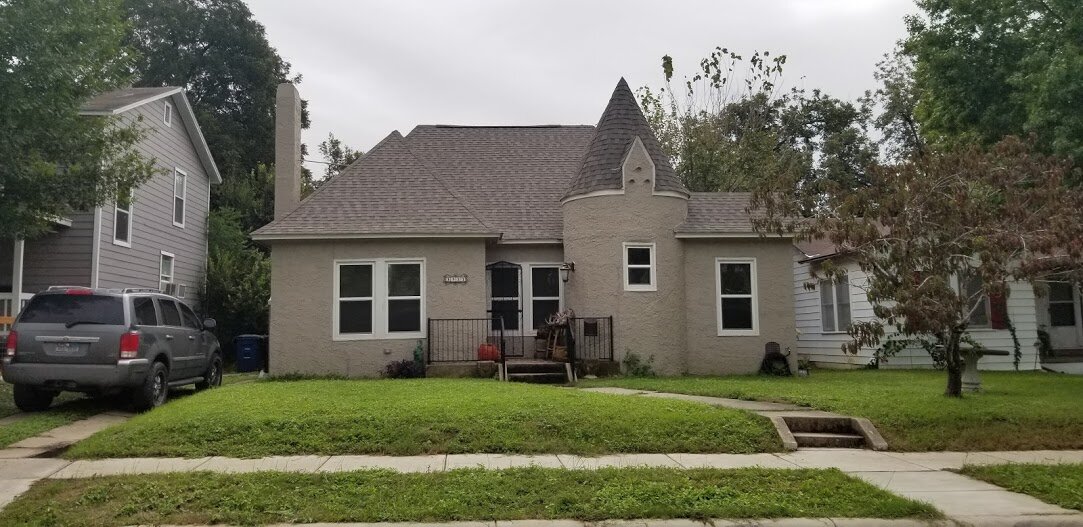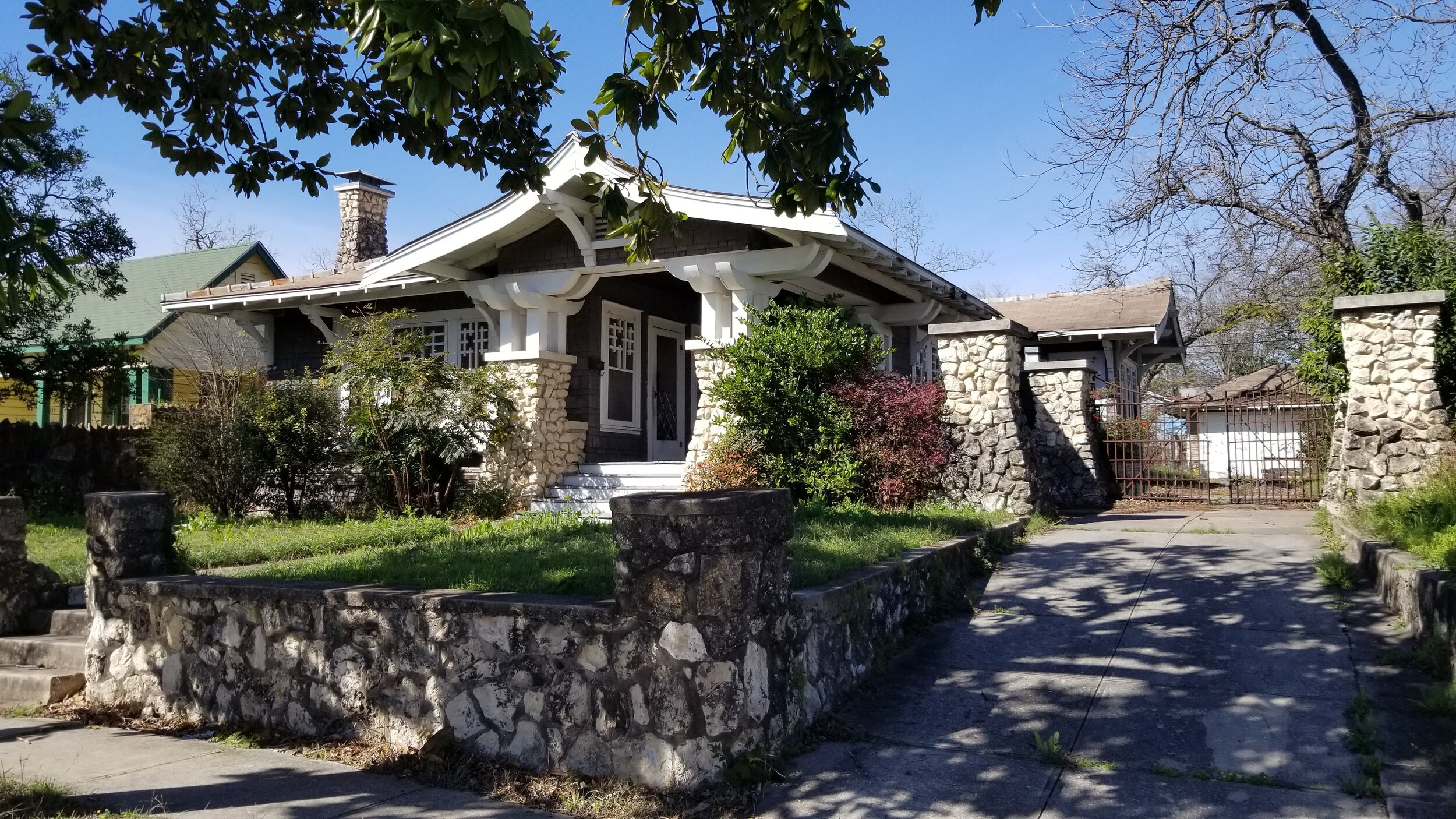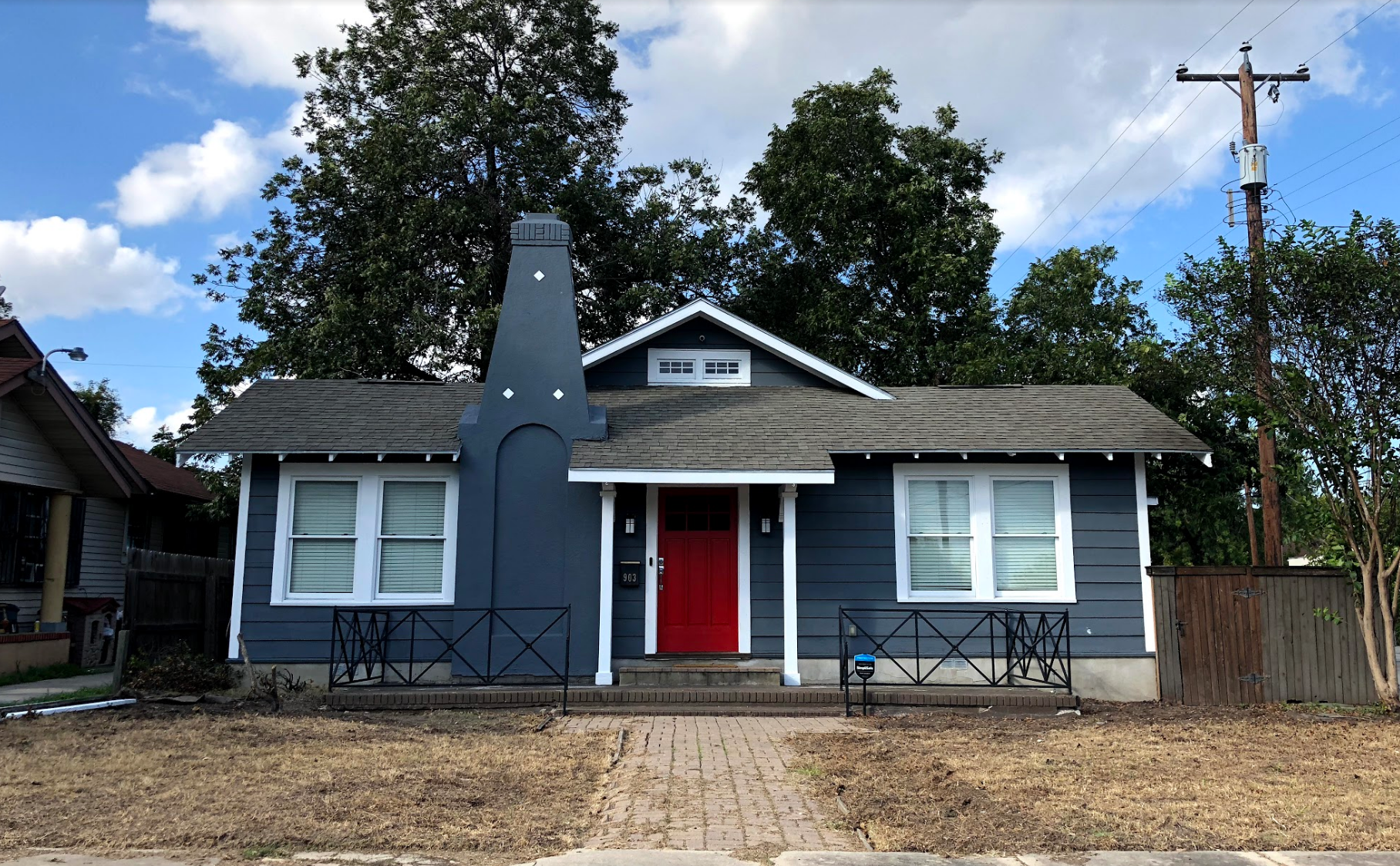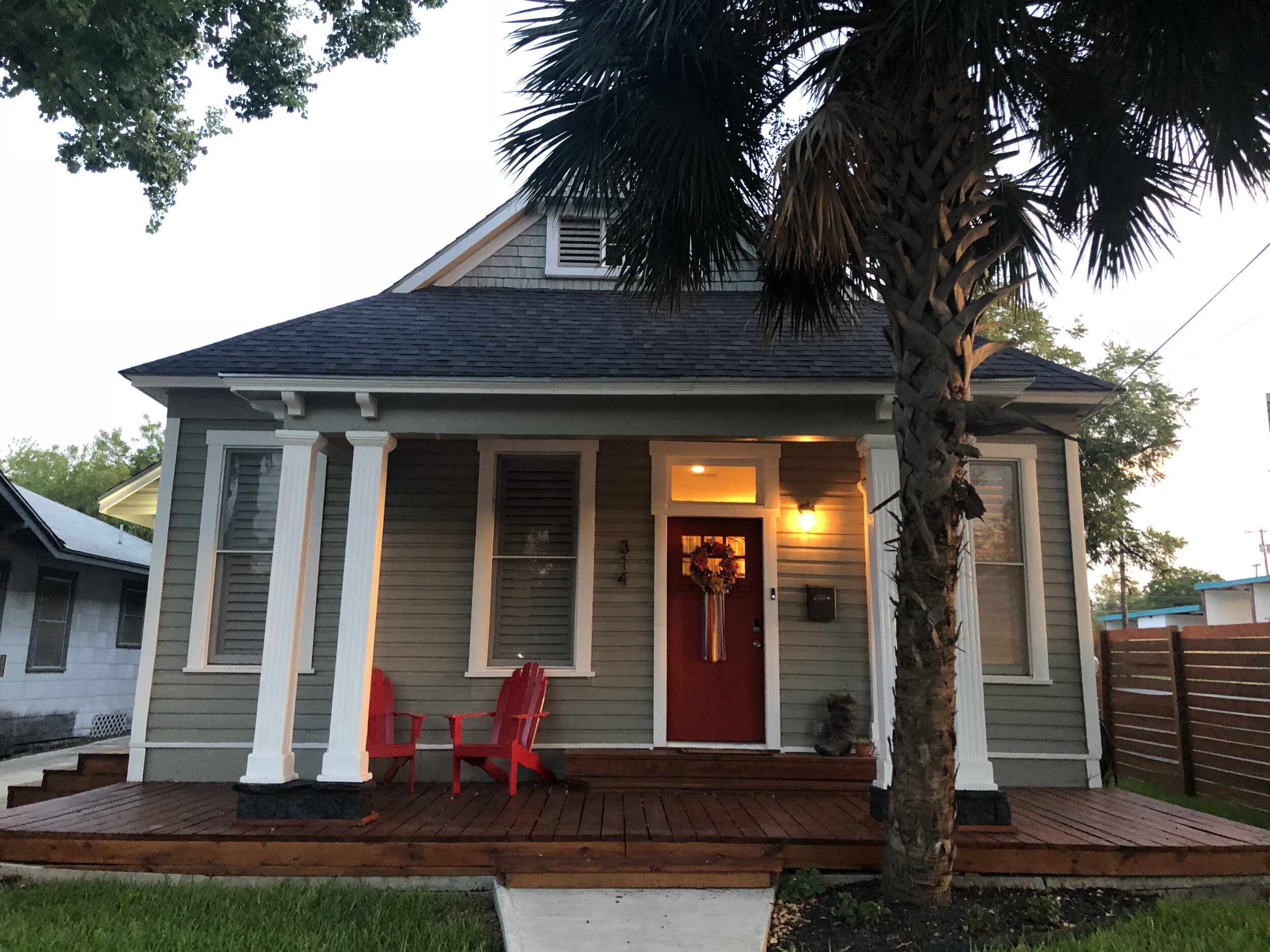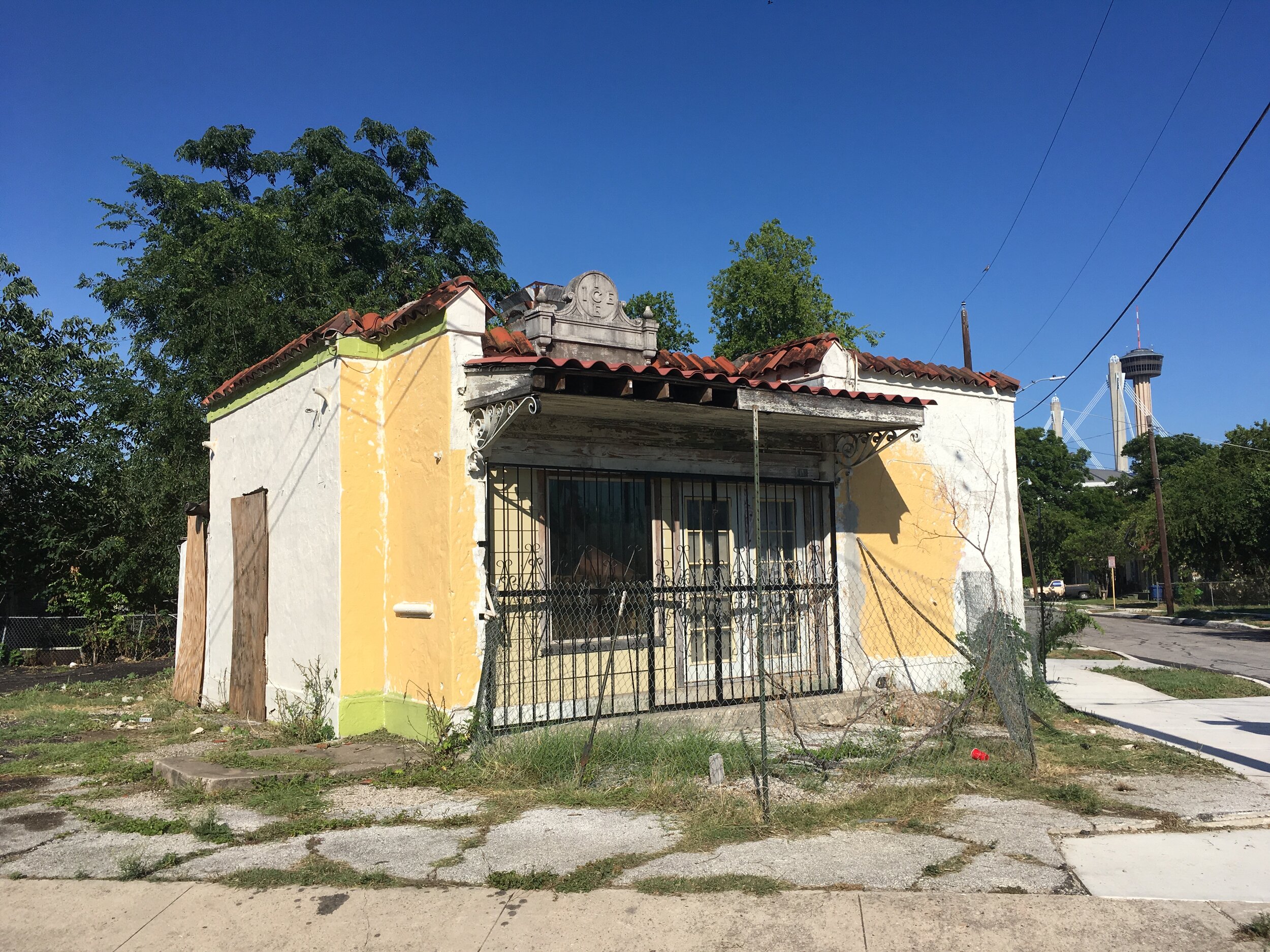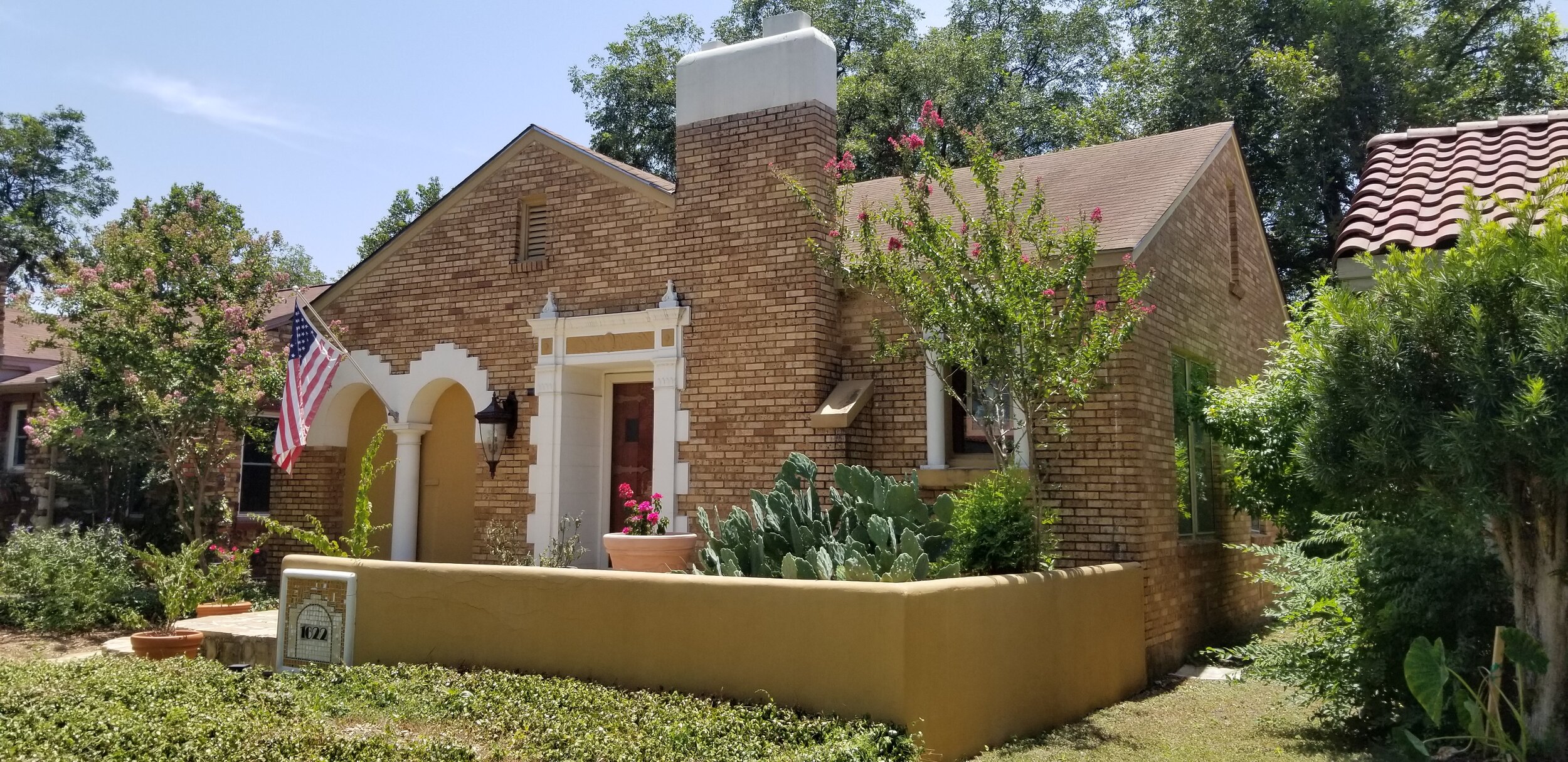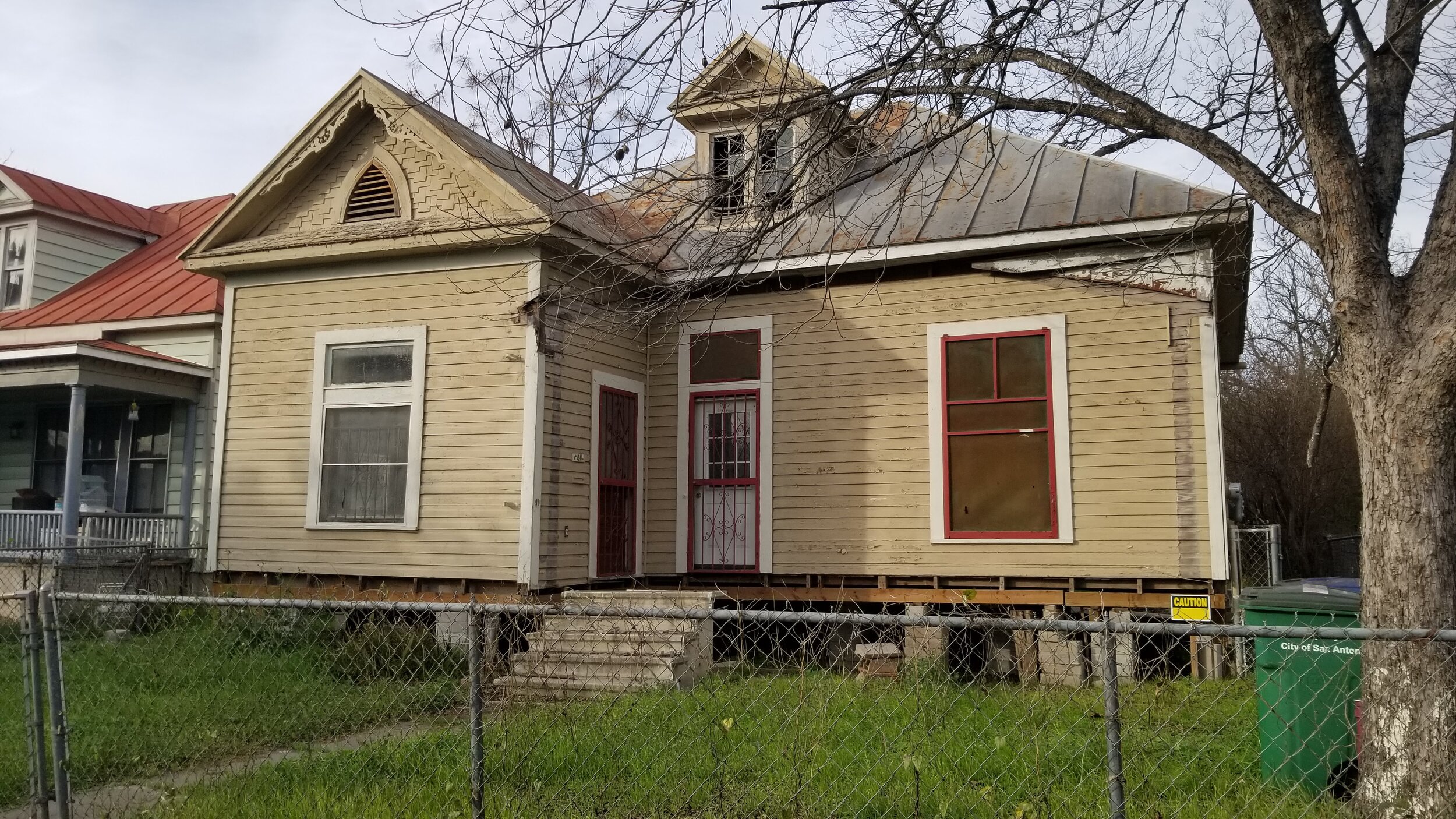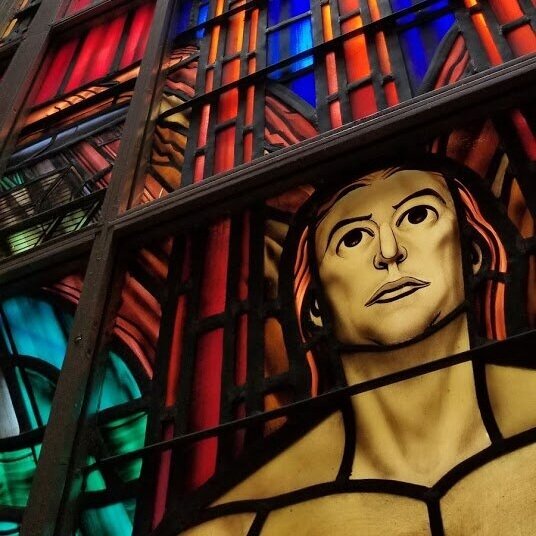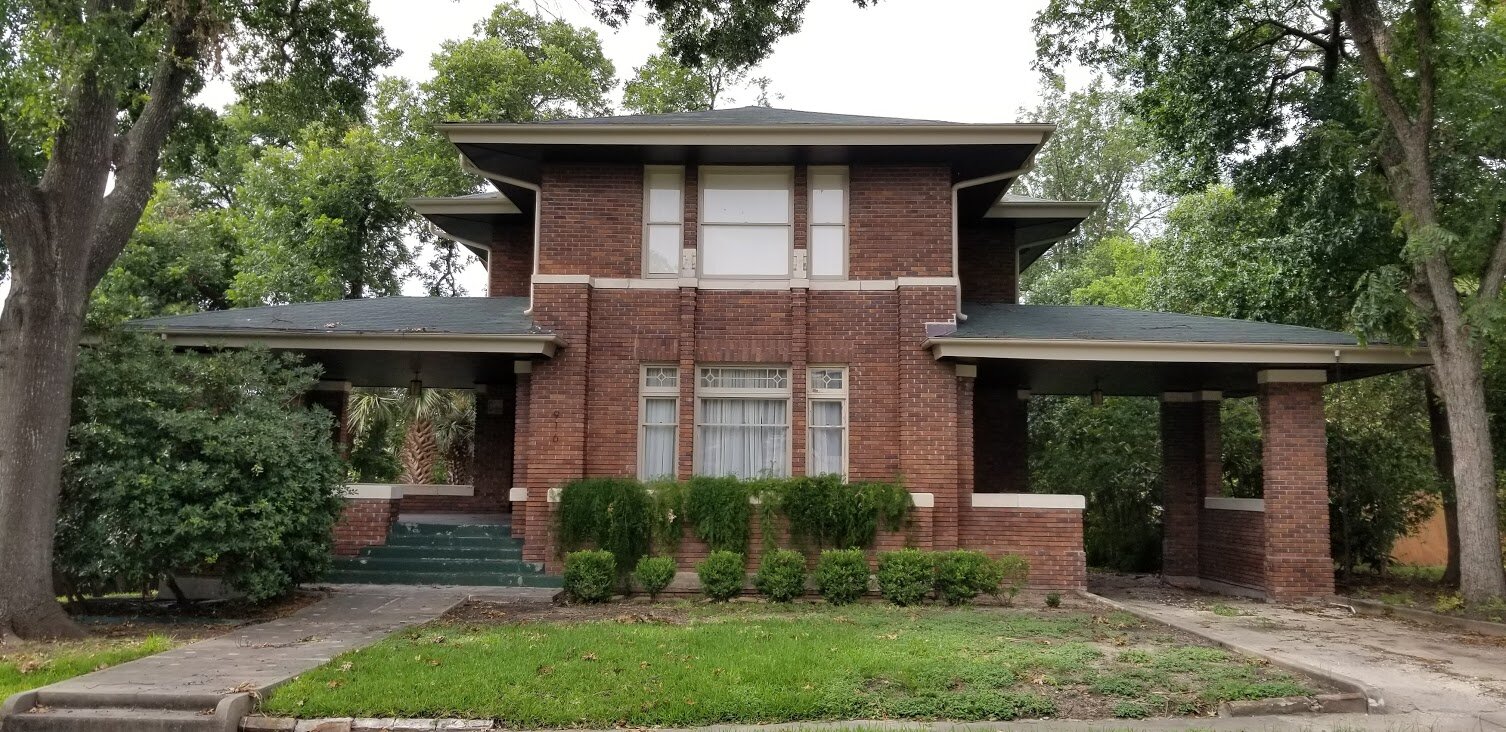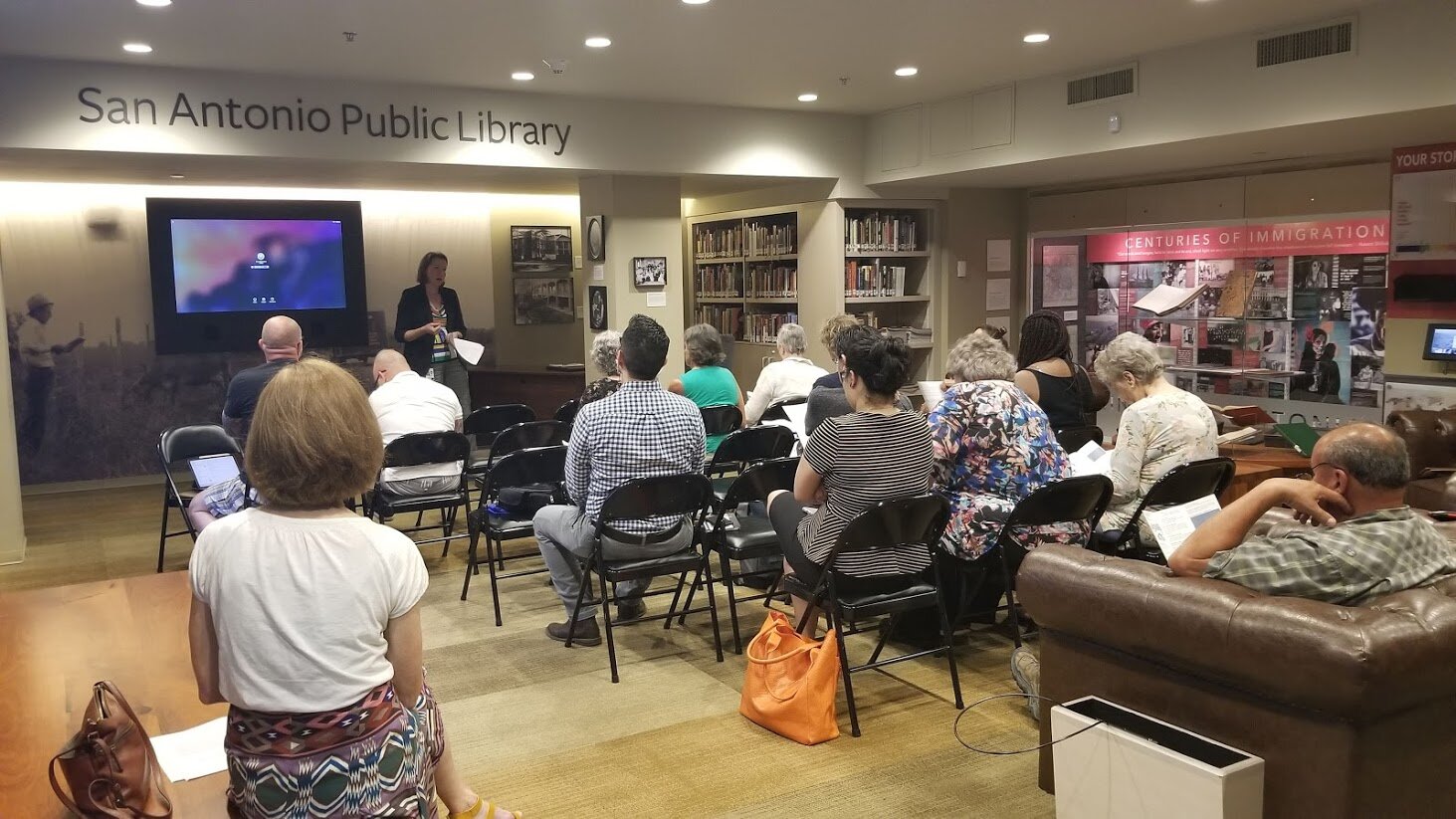ScoutSA 2019 Year in Review
As we count down to 2020, we in ScoutSA—the designation, survey, and assessment arm of the Office of Historic Preservation—decided to take some time to reflect on what we’ve accomplished in the last 12 months. In 2019, we worked with citizens to designate San Antonio’s 31st local historic district, partnered with home- and business owners to landmark eight properties, and completed five surveys of San Antonio’s built heritage. Our work introduced us to pioneering architects of the city’s past and allowed us the opportunity to collaborate with college students training to be our next generation of architects, contractors, and preservationists. And we had some real wins to celebrate, including turning a request for demolition into a landmark and helping build a case against demolition that lead to a small local business taking ownership of an historic property.
City Council designated Greenlawn Estates a local historic district in February. Ad published in the San Antonio Express, October 1, 1927.
In February, after ScoutSA and citizens worked together for nearly a year to move the case along, City Council designated Greenlawn Estates as our 31st local historic district. Located in the Los Angeles Heights neighborhood of northwest San Antonio, Greenlawn Estates was first developed in the late 1920s and 30s, and features some beautiful examples of Tudor revival, Mission revival, ranch, and minimal traditional homes. Homeowners within the proposed boundaries overwhelmingly supported designation, ensuring San Antonians will enjoy the neighborhood for generations to come.
Owners kept us busy this year with a steady stream of requests for designation. We get attached to each of these homes as we learn more about their past residents and their current owners, and we’re reminded of the factors that impacted the development of our city. We designated a tiny castle at 1322 McKinley, an Asian-influenced Craftsman bungalow at 843 Rigsby, and a multi-generational home-turned-buñuelo-business at 118 Florida. Researching the Tudor-influenced Craftsman home at 903 W Huisache reminded us about the impact of electric trolleys on San Antonio’s growth, while looking into 314 E Ashby and the surrounding Tobin Hill neighborhood drove home just how much the city expanded after 1920. We got to learn about the role of an ice house in a walkable urban neighborhood when designating 419 S Hackberry, and identified the home of a former mayor at 1622 W Huisache. Photos of our newest local historic landmarks are included in the gallery below.
215 Lowell, a local historic landmark.
We were particularly excited when an owner reached out to designate 215 Lowell, a Folk Victorian residence built in 1908 by German immigrant Henry Adolph Schoenfeld for his son. Schoenfeld was a respected builder who worked on the Driskill Hotel and the Texas State Capitol before heading south to San Antonio. The owner originally planned to demolish the property, but when we shared the property’s history, the owner withdrew his demolition request and chose to landmark instead. The home has a twin next door at 217 Lowell, built the same year by Schoenfeld, and we’re relieved the siblings will stay a pair for as long as possible. We already have four properties slated for designation in 2020, thanks to owners invested in retaining and celebrating our city’s historic fabric. We look forward to introducing you to them—and many others!—next year.
843 Rigsby Ave, a local historic landmark and inspiration for our survey of Asian-influenced Craftsman homes.
It was a big year for surveys in ScoutSA. A small but dedicated group of preservation specialists (and one or two interns we strong-armed into helping) finished up five unique surveys in 2019. Early in the year, we wrapped up a survey of Westside homes and put the finishing touches on a windshield survey of the Roosevelt and South Presa corridors in City Council District 3, documenting a number of historic commercial buildings for our database. Designation of 843 Rigbsy led staff to launch a survey of Asian-influenced Craftsman homes in our city’s core; ScoutSA’s intern Angela Gallegos put together this amazing StoryMap to share the results. We spent a few hot summer days photographing and assessing for integrity post-1950s commercial buildings along Broadway, followed by cooler fall days surveying the portion of the Tobin Hill Community Association not included in the local historic district. We hope to finish the THCA survey in early 2020.
Norcell Haywood, from the article “The Community Architect Concept,” Jesse Henry Jr, San Antonio Express/News, Sunday, September 17, 1972.
Part of ScoutSA’s duties is to complete assessments of historic-age properties, which—in San Antonio—means properties 25 years old or older. These assessments allow owners to learn more about the history of their homes or buildings while also gauging whether OHP would find the property eligible for local landmark designation. They’re one of the many opportunities ScoutSA staff has to learn more about our city’s history. This year, we researched a building at 126 Villita, renovated in 1974 by San Antonio architect Norcell Haywood. Haywood was the first licensed black architect in San Antonio and one of the first four black people to graduate from The University of Texas at Austin. We got to climb the scaffolding behind the stained glass Loring Window at Travis Park United Methodist Church, which graces the front their Youth Building, completed in 1950 and designed by prominent church architect Henry Steinbomer. Staff went down a bit of a research rabbit hole learning about the St. Louis stained glass firm and affiliated artist who designed the window, Josef Mayer of Jacoby Stained Glass Studio. We were introduced to what is likely a George Rodney Willis-designed home at 916 W Mistletoe. The c. 1919 Prairie Style brick home evokes the form made famous by Willis’ former employer, Frank Lloyd Wright. Born and raised in Chicago, Willis worked as a draftsman in Wright’s studio before moving first to California and then to Texas. Upon arriving in San Antonio, he worked for Atlee B. Ayres, and then C. T. Boelhauwe, before launching his own firm in 1917. You may recognize Willis’ work from his design of the Milam Building (1928) or the bright yellow Wrightian house on Wilkins Ave.
We jokingly dubbed 2019 “The Year of the Stone House.” Staff evaluated at least four late 19th century stone homes in quick succession this year, three of which were part of the Irish Flats neighborhood. Our research on the Irish Flats and stone houses in general was aided in no small part by our city archaeologists, Kay Hindes (retired) and Matthew Elverson. The neighborhood developed in the 1850s and 60s as Irish and German families built small vernacular stone homes in a fairly concentrated area of early San Antonio. Our assessment of a c. 1873 landmarked stone house on McCullough, for which the owner requested demolition, resulted in the owner withdrawing his demolition request and selling the property to the small business that had occupied the building since 1993.
ScoutSA’s Dr. jenny hay presents at a workshop titled Genealogy of a House, presented in partnership with the San Antonio Public Library.
Bringing some variety to our usual work, ScoutSA was invited to share information about San Antonio’s historic homes with Dr. Angela Lombardi’s Materials Assessment & Preservation class in UTSA’s College of Architecture, Construction and Planning. We discussed how to identify common styles of residential architecture and introduced students from architecture, construction, and preservation programs to the tools we use to date and establish contexts for historic structures. We joined the talented team at San Antonio Public Library’s Texana & Genealogy program for another installment of Genealogy of a House, presented by SAPL’s Sylvia Reyna and ScoutSA’s Dr. jenny hay as part of Preservation Month. Attendees learned how to use materials available through the central library to identify their homes’ build dates, building style, previous tenants, and other historic information of interest. The presentation took place in SAPL’s portal at the Briscoe Western Art Museum.We were also chosen to participate in the 2019 CivTechSA Challenge, which partnered students with City of San Antonio programs to work toward solutions to real-world civic problems. ScoutSA worked with students from OLLU’s Creative Thinking class, taught by Dr. Bruce Rosenthal, dean of the School of Business and Leadership. Students helped us evaluate challenges related to information sharing, engaging the community in our survey work, and enhancing our public-facing materials. Solutions proposed by the student groups resulted in the very website you’re visiting to read this blog!
We can’t think of a better way to wrap up 2019 than by sharing that ScoutSA is the recipient of an Educational Grant from the Conservation Society of San Antonio! Their support will fund survey consultation services to assist staff with collecting and publishing survey data. We owe much to the Conservation Society for its support over the years and for the countless volunteer hours they’ve contributed to groundbreaking surveys, such as those celebrating historic gas stations, farm and ranch complexes, Asian-influenced Craftsman architecture, and more.
Reflecting on this past year, we see that these accomplishments are only possible because of neighborhood associations, schools, property owners, and all our community partners across San Antonio who invite us into their homes and businesses, share with us their neighborhood’s goals and concerns, and let us know what we need to focus on documenting and protecting. We’re a small team, but we’re bolstered and energized by the engaged citizens we work with every day. We hope you continue to reach out, and we thank you for all the work you do!
If you have questions about ScoutSA’s programming and initiatives or are interested in designating your property, we’d love to hear from you! Contact the ScoutSA team via Jessica Anderson, jessica@sapreservation.com or (210) 207-7984.
Click through the gallery below for photos of properties we worked with in 2019 and samples of feedback we received from happy customers!
